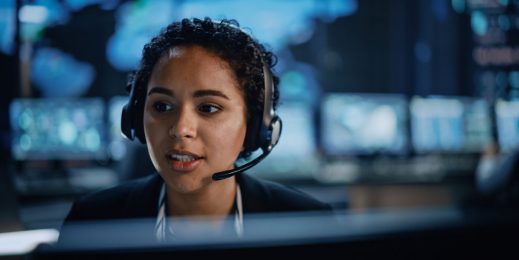
Online learning has set the future of education in motion
As the region begins to embrace online learning as the new normal, exciting shifts in education are unfolding
It was during one of the many online lessons currently taking place across the UAE, that the teacher facilitating the class unexpectedly lost connection. With the internet refusing to cooperate, it seemed the lesson had come to a grinding halt. But no sooner had her connection died, than one of the primary school learners messaged the teacher with an idea. “All of the learning materials are saved on OneDrive. If you tell me in what order we should look at the materials, I can help guide the class.”
The young student from the Raffles International School in Dubai demonstrated the kind of leadership most teachers dream of cultivating in their learners. But until now this has been a fairly rare quality in school leavers the world over. In fact, just 42 percent of employers believe they’ve encountered graduates with good social and emotional skills.
And it’s not the only example of this kind we’re seeing. Seema Vinod is the Coordinator of Education Technology for Innoventures Education – the group of schools to which Raffles belongs. She says children across the group are increasingly taking ownership of their learning journeys.
The question is – why suddenly are we seeing such positive change?
The sudden shift to student-centred experiences
Set in motion by the sudden shift to online learning, education communities are reimagining the way in which students learn.
According to Microsoft Innovative Educator Experts across the Middle East and Africa (MEA), it’s giving them the space they need to take responsibility for their learning, understanding more about how they learn, what they’re interested in learning and the support they need to achieve.
This is critically important in a diverse region like MEA where the needs of students vary greatly. Before online learning became the new normal, just 38 percent of educators felt they were adequately equipped for teaching in a multicultural classroom. But teachers agree that having to rely on technology during this period of remote working is helping transform classroom time, enabling them to focus on more student-centered learning and ultimately a better teaching experience.
Tools like Microsoft Teams, for example, are making it easier for teachers to split children into groups and attend to them separately. “While teaching I can decide to assess just a few students at a time by having them go on to Flipgrid and answer specific questions for me,” says Martina Ayokunle a Microsoft Innovative Educator Expert who teaches at St Saviour’s School, Ikoyi in Lagos, Nigeria. “I can adapt the lesson so it meets the needs of every child.”
Self-led learning inspires confidence
Technology also helps students function at their own pace. This gives children of all abilities the confidence to achieve. Ayokunle uses Microsoft’s Immersive Reader where students in her class have reading difficulties like dyslexia. “It works like magic. Children that used to feel ashamed of their reading ability now want to learn to read.”
Dr. Hale Uçus, an educator at the Bilecik City Ertuğrulgazi Vocational & Technical High School in Turkey, has had the same experience. During her freelance work with students who have visual impairments, she’s seen firsthand how online learning can instill a sense of self-achievement.
Sometimes when students with visual impairments are working side by side with students who have full vision, says Dr. Uçus, they feel peer pressure to learn in a fashion that may not come most naturally to them. But with online learning, the process is self-owned and independent.
“I moved from face-to-face learning to remote learning after having been in formal education trying to apply assistive technology for learners with visual impairments. I chose remote learning as the better approach because it assists students with their sense of self-achievement,” she says.
It’s this independence encouraged by online learning that explains why educators are suddenly witnessing greater social and emotional growth than ever before.
Collaborating towards improved outcomes
At the same time, the shared experience of what the world is going through has enabled teachers to form a deeper connection with their students, parents and fellow educators. In fact, online learning has revealed the extent to which entire communities are able to work together to improve education outcomes.
Information-sharing between teachers is one of the best ways to evolve teaching practice. But in the past very few teachers engaged in collaboration. In a recent survey, just nine percent of teachers around the world said they provide observation-based feedback to colleagues, and only 21 percent said they engaged in collaborative professional learning.
However, for the first time, educators, parents and students are all congregating in one place – Microsoft Teams – to consult one another around the education needs of individual children. “All over the world teachers are sharing ideas. We are learning that teaching goes far beyond text books and classroom walls. Life experience is an absolute vital part of learning,” says Vinod.
Keeping the momentum going
The world of education is transforming before our very eyes and it’s drawn greater attention than ever before to the need for teachers to receive more comprehensive training around education technology.
Gamification tools like Minecraft, for example, can be a powerful way of promoting collaboration, critical thinking and self-direction. But as Ayokunle points out, if a teacher doesn’t know how to use Minecraft, there’s little chance of their students benefitting from the technology.
On the other hand, educators who have been actively exploring technology during this time of remote learning have not only become far more confident in their use of technology, but also extremely creative in their use of different tools.
“Microsoft Teams – and the broader education and Office 365 ecosystem – has revolutionised how we work and teach; it has taken us to a new level of working as it allows people to come up with innovative and creative ways of solving problems, and is ultimately changing traditional ways of teaching by showing that quality teaching can still take place remotely,” comments Chanille Viviers, Director of Technology and Innovation and Head of the EduTech centre at Steyn City School in South Africa.
The more teachers who are trained to incorporate technology into their classrooms, the greater the pace of innovation in education will be. Gradually, we’ll see gaps in learning get smaller as teachers make use of technology to ensure that even those learners who aren’t physically present don’t miss out on lessons learnt.
Ayokunle is confident progress made will carry through beyond the current crisis. “The classroom is now wherever the child is. We’ve proved beyond all doubt, learning can take place regardless of your location,” she says.












![A security team analyses key data from a visual dashboard.]](https://news.microsoft.com/wp-content/uploads/prod/sites/133/2023/04/Security-Sprint_TL_Banner-Image-519x260.jpg)



